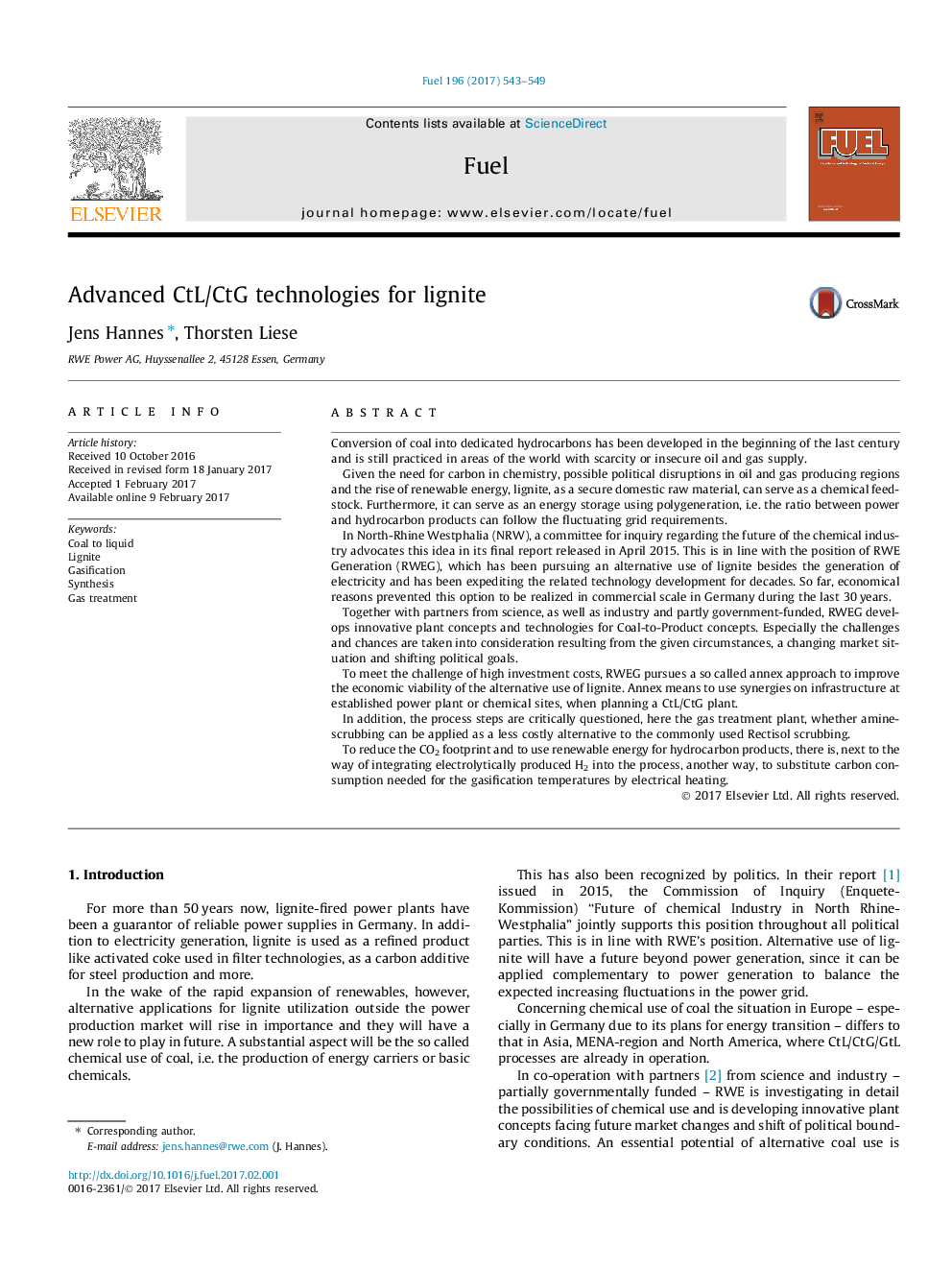| Article ID | Journal | Published Year | Pages | File Type |
|---|---|---|---|---|
| 6475139 | Fuel | 2017 | 7 Pages |
Conversion of coal into dedicated hydrocarbons has been developed in the beginning of the last century and is still practiced in areas of the world with scarcity or insecure oil and gas supply.Given the need for carbon in chemistry, possible political disruptions in oil and gas producing regions and the rise of renewable energy, lignite, as a secure domestic raw material, can serve as a chemical feedstock. Furthermore, it can serve as an energy storage using polygeneration, i.e. the ratio between power and hydrocarbon products can follow the fluctuating grid requirements.In North-Rhine Westphalia (NRW), a committee for inquiry regarding the future of the chemical industry advocates this idea in its final report released in April 2015. This is in line with the position of RWE Generation (RWEG), which has been pursuing an alternative use of lignite besides the generation of electricity and has been expediting the related technology development for decades. So far, economical reasons prevented this option to be realized in commercial scale in Germany during the last 30Â years.Together with partners from science, as well as industry and partly government-funded, RWEG develops innovative plant concepts and technologies for Coal-to-Product concepts. Especially the challenges and chances are taken into consideration resulting from the given circumstances, a changing market situation and shifting political goals.To meet the challenge of high investment costs, RWEG pursues a so called annex approach to improve the economic viability of the alternative use of lignite. Annex means to use synergies on infrastructure at established power plant or chemical sites, when planning a CtL/CtG plant.In addition, the process steps are critically questioned, here the gas treatment plant, whether amine-scrubbing can be applied as a less costly alternative to the commonly used Rectisol scrubbing.To reduce the CO2 footprint and to use renewable energy for hydrocarbon products, there is, next to the way of integrating electrolytically produced H2 into the process, another way, to substitute carbon consumption needed for the gasification temperatures by electrical heating.
